Best things to do in Dublin
Dublin is a city full of character, with a spirit that reveals itself in unexpected places. Beyond its well-known landmarks, there are vibrant streets, cozy corners, and unique spots waiting to be explored.
Dublin is a city full of character, with a spirit that reveals itself in unexpected places. Beyond its well-known landmarks, there are vibrant streets, cozy corners, and unique spots waiting to be explored.

From vibrant markets and street art to serene parks and historic corners, Dublin is a city that surprises at every turn, blending its storied past with a creative, modern energy that’s impossible to resist. Ready to explore the best things to do in Dublin through our eyes? Let’s go.
Dublin Airport is located 10km from the city center, offering direct flights from major cities in the UK, Europe, North America, and the Middle East. Taxis from the airport to the city center cost around €30 and take 30-45 minutes. Dublin Express runs buses to the city center and Heuston Station between 4am and 12:35am. Dublin Bus offers routes 16 and 41 to the city center (the 41 operates 24 hours a day, with travel times around 45 minutes).
Dublin is a key destination for cruise lines and a popular stop on many cruise itineraries. The city has two main ports: Dublin Port, located just 2 kilometers from the city center, and Dún Laoghaire Harbour, situated 12 kilometers to the south. Dublin Port is 2 kilometers from the city center. It can be accessible via Dublin Bus route 53 and the Luas (tram).
If you’re traveling to Dublin from other parts of Ireland or Northern Ireland, you’ll arrive at one of the city’s three main train stations, all offering intercity services. These stations are Connolly, Heuston, and Pearse Station.
Connolly Station: Serves routes to Belfast, Rosslare, Wexford, and Sligo.
Heuston Station: Handles services to Cork, Limerick, Waterford, Galway, Mayo, and Kerry.
Pearse Station: Offers intercity services to Wexford and Rosslare.
Ireland features an extensive public bus network, making it easy to travel from Dublin city center to various destinations across the country, including Northern Ireland. Both private and state-owned bus services operate numerous routes to meet the needs of travelers.
Bus Éireann: This state-owned service offers bus routes connecting major cities such as Cork, Galway, Limerick, and Waterford, as well as commuter and intercity services throughout Ireland.
Dublin Coach: This private company provides local and nationwide commuter bus services, including routes to Dublin Airport, Dublin City, Limerick, Ennis, Kildare, Newbridge, Naas, Portlaoise, and Portarlington.
Wexford Bus: This service operates routes between Wexford and Dublin Airport & City, Wicklow and Dublin City & Airport, Wexford and Waterford, Wexford and Carlow, as well as services within County Wexford.

Renting a car in Dublin is a nice way to explore the city and the beautiful surroundings. With several rental companies available at the airport and throughout the city, you can easily find a vehicle that suits your needs. We recommend booking well in advance using price comparison sites like rental cars.
Dublin is a small city that’s easy to explore on foot, so you usually don’t need a car. However, if you want to visit places outside the city center, like Phoenix Park or the Guinness Storehouse there are some public transport options:
The bus network covers the city and nearby areas, with most buses running from 5 am to midnight. On Friday and Saturday nights, some buses run until 4 am, and eight routes, including the 41 to Dublin Airport, operate 24 hours a day.
DART trains connect the city center to the coast. You can buy tickets at each station.
Dublin’s tram system has two lines: the red line runs from east to west, and the green line runs north to south. You can buy tickets at the stations.
This bike-sharing program lets you rent a bike from any of the 115 stations around the city, available from 5:00 am to 12:30 am. A one-day ticket costs €3.50, and a three-day ticket is €5. The first 30 minutes of each ride are free, and after that, it’s €0.50 per hour.
You can easily wave down a taxi on the street, but using the Free Now app is a simpler way to book one. Uber is also available but isn’t as commonly used in Dublin.
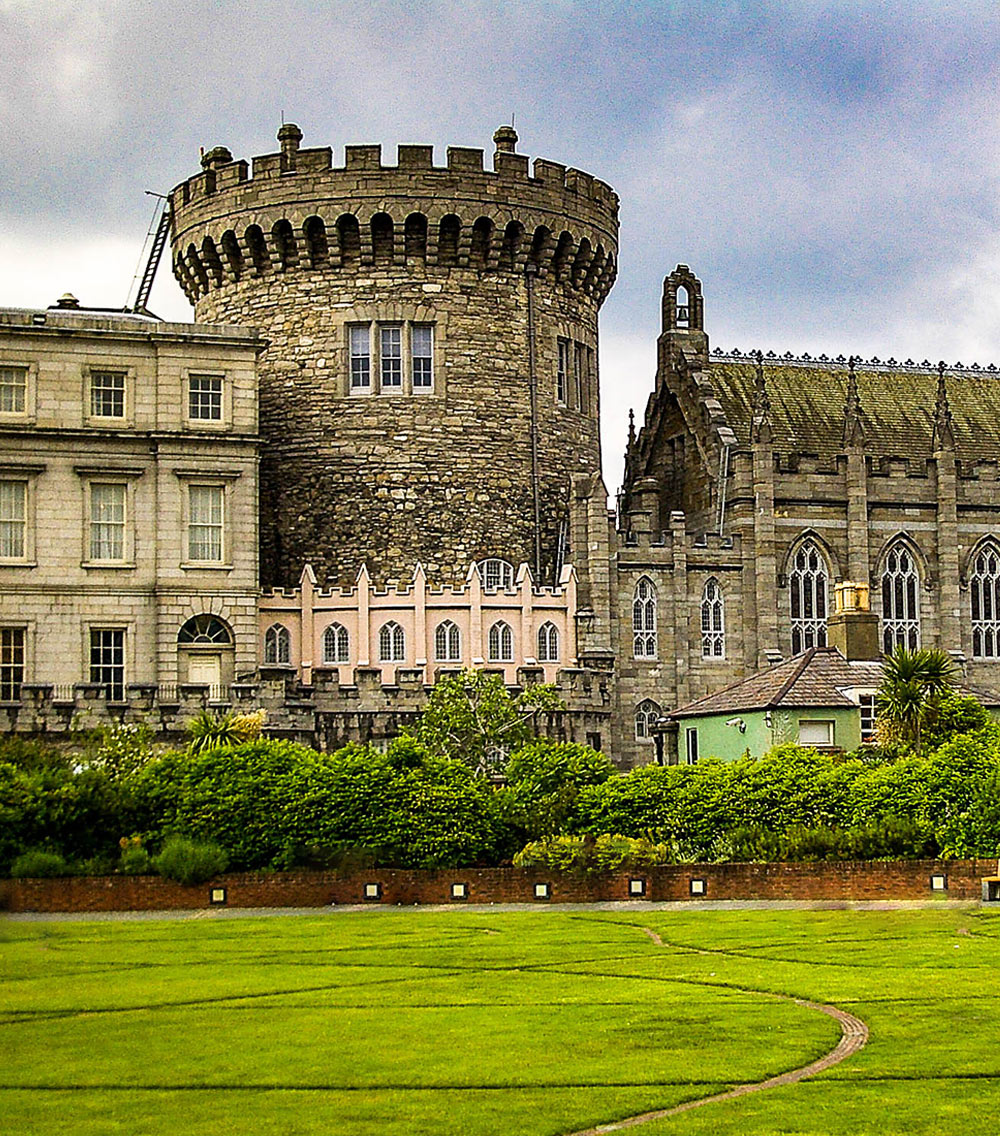
Dublin Castle, built on the site of a Viking settlement in the 13th century, served as the headquarters for the British administration in Ireland for many years. Located just off the bustling Dame Street, the castle features the serene Dubh Linn Gardens, perfect for a leisurely stroll. While visiting, be sure to check out the Chester Beatty Library, which features a fantastic Middle Eastern-inspired café and a tranquil rooftop terrace. Guided by knowledgeable staff, visitors can hear fascinating stories about everything from underground chambers to medieval towers.
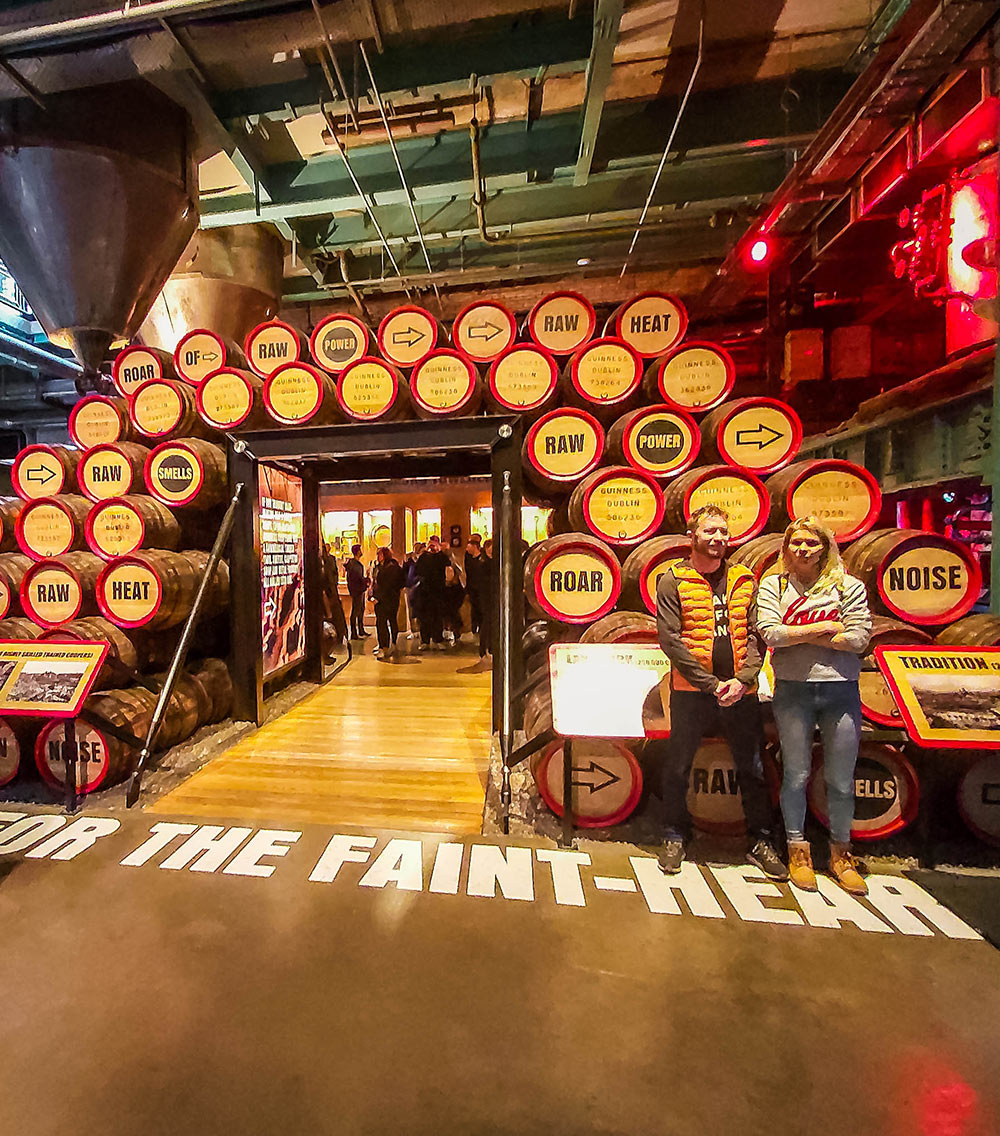
Another highly recommended attraction is the famous Guinness Storehouse. Located at St. James’s Gate, this iconic site marks the spot where Arthur Guinness established his brewery in 1759, famously securing a 9,000-year lease.
There are various tour options available, but choosing a guided tour is ideal for a deeper understanding of the brewery’s history. The experience concludes with a pint in the Gravity Bar, where you can enjoy stunning views of the city skyline.

In 1185, King Henry II granted Richard Talbot the lands and harbour of Malahide, marking the start of the Talbot family’s influence in the area. The original wooden fortress was replaced by the stone Malahide Castle, which underwent various expansions and fortifications over the centuries.
The Talbots were known for their diplomacy and held the castle for nearly eight centuries, interrupted only between 1649 and 1660 when Cromwellian forces seized their lands. The last Baron de Malahide, Lord Milo Talbot, lived in the castle until his death in 1973. His sister, Rose, sold the estate to the Irish State in 1975. Today, Malahide Castle is a significant site in Ireland, hosting international events and welcoming thousands of visitors each year.
You can tour the castle, stroll through the beautifully kept grounds, and then visit the village of Malahide.
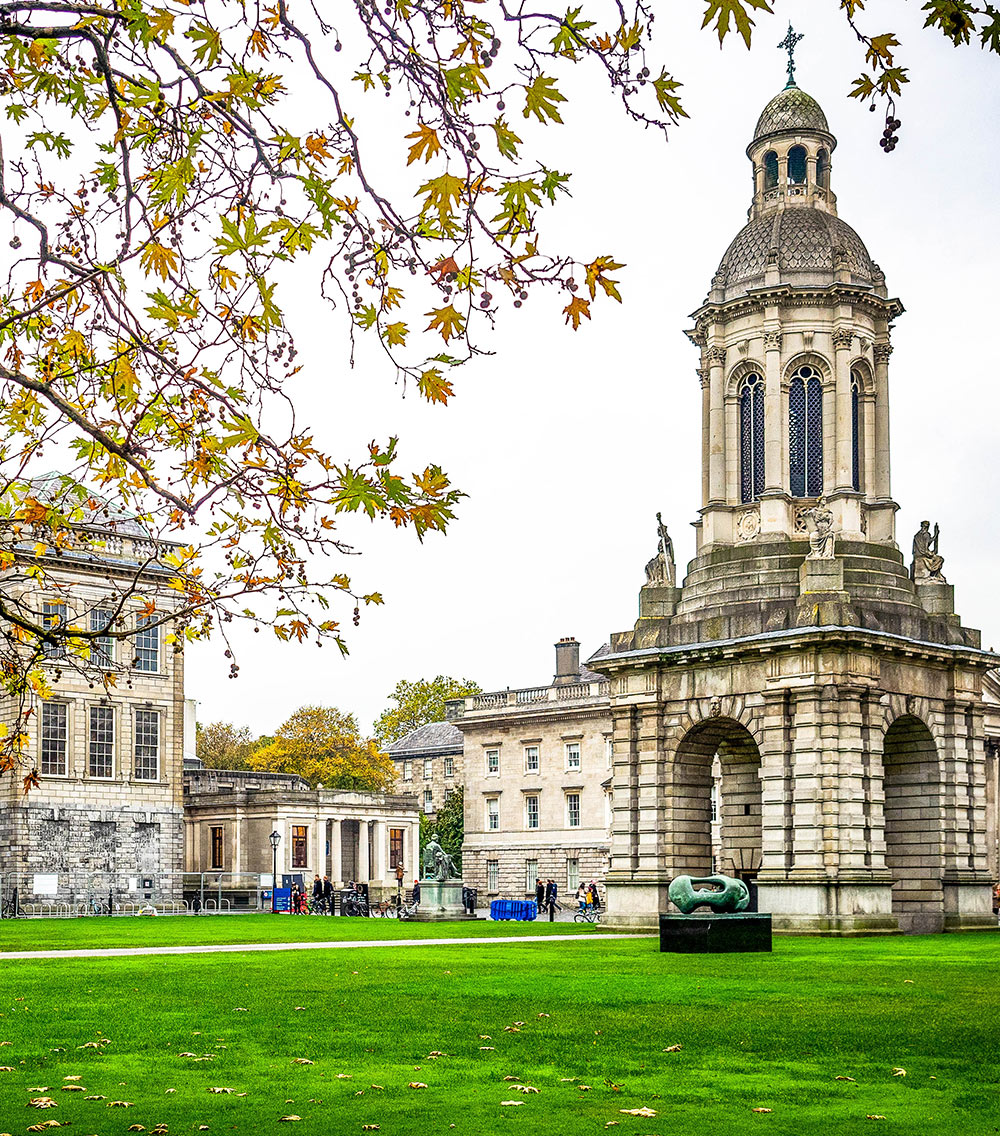
Trinity College is in the city centre and offers cobblestone squares, large playing fields, and beautiful buildings, making it a great place to explore. As Ireland’s oldest university, it is also home to one of the world’s most famous books. Visitors can check out the Book of Kells, an ancient manuscript made on calfskin that dates back to the ninth century, through a daily exhibition.
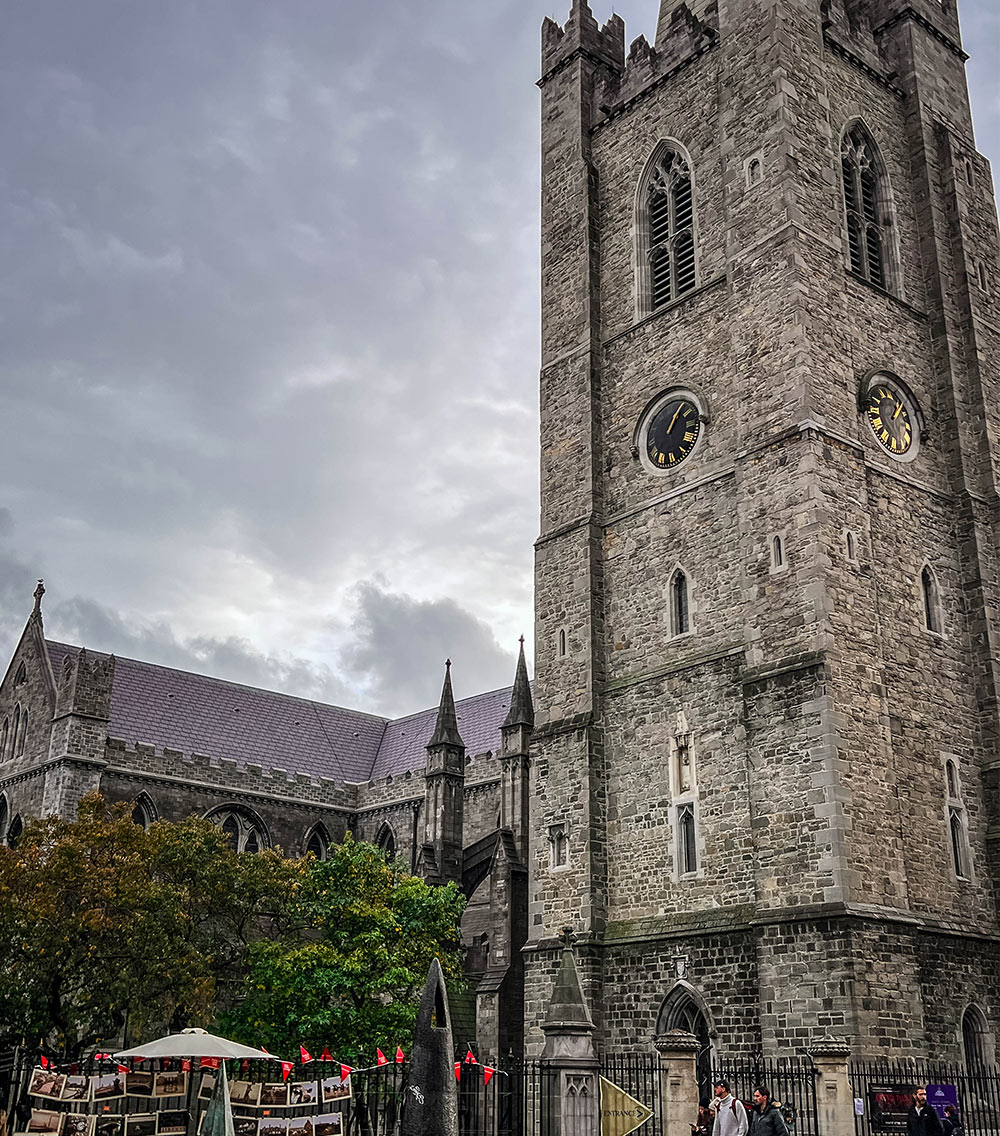
Both St. Patrick’s Cathedral and Christ Church Cathedral are definitely worth visiting, and they’re close to each other, just a 7-minute walk apart.
St. Patrick’s was established in 1191, but the construction of the current cathedral began around 1220 and took about 40 years to complete. Christ Church Cathedral, founded by Dublin’s first bishop and Sitriuc, the Norse king of Dublin, dates back to around 1030.
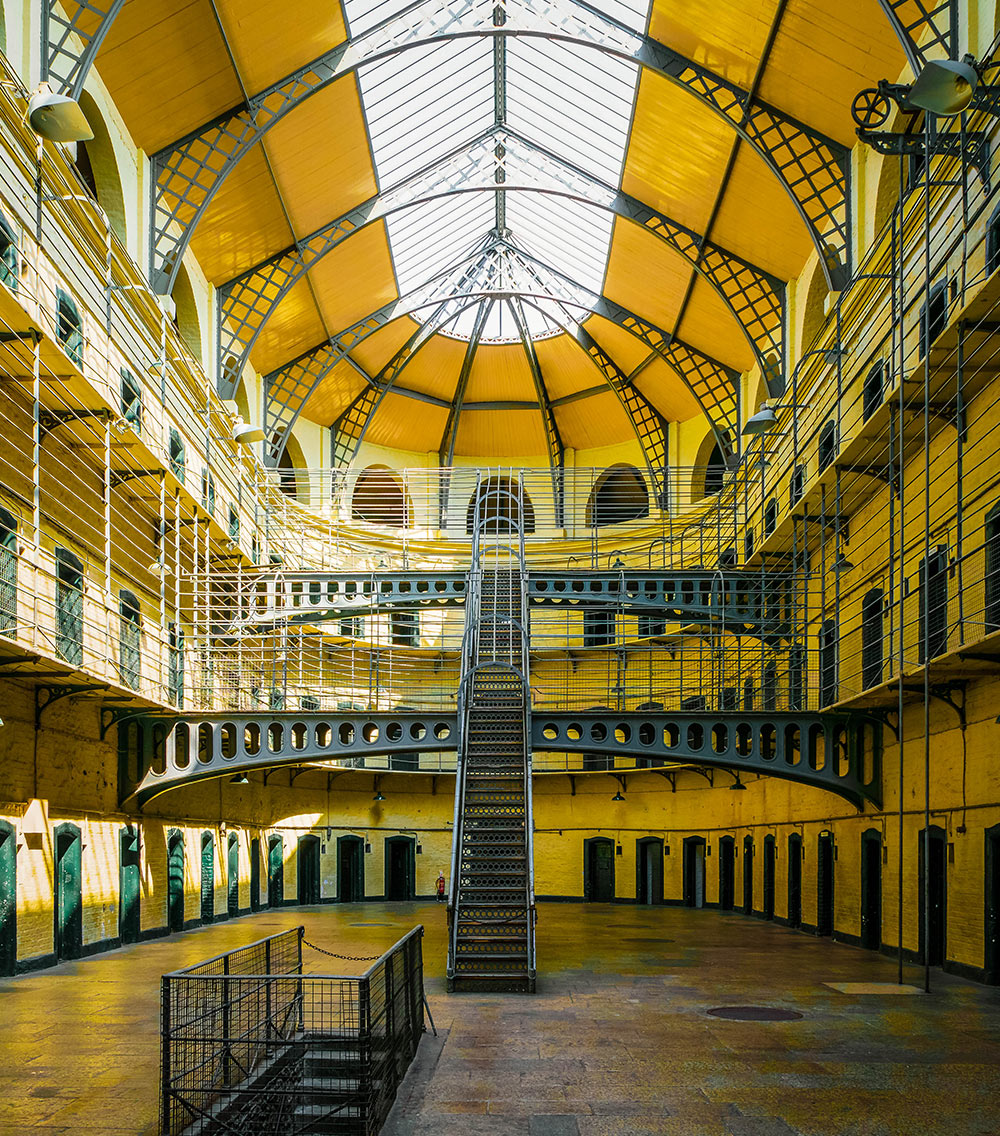
Kilmainham Gaol is just outside the city centre and has played an important role in Irish history. While you’re in the area, you can also visit the nearby Irish Museum of Modern Art.
Opened in 1796, Kilmainham Gaol served as the County Gaol for Dublin and the surrounding area. Many leaders from the rebellions in 1798, 1803, 1848, 1867, and 1916 were imprisoned within its walls. During the Anglo-Irish War (1919-21), many members of the Irish Republican movement were also held there.
The tour provides a deep look into the past. It is both informative and moving, and the guides share the stories in an engaging way.

Marsh’s Library, established in 1707, is Ireland’s oldest library, containing around 25,000 books and over 300 manuscripts. As you explore Marsh’s, look for the holes in the bookcases, created during the Easter Rising when the adjacent hotel was occupied.
Don’t forget to look at the visitor book, where you can find signatures from notable figures like James Joyce.

Phoenix Park is one of the most well-known parks in Dublin and is the largest park in any European city, offering a variety of sights and activities.
One thing you can do is rent bikes at the main entrance and explore the park’s many attractions. You can take a break for coffee at the Hole in the Wall pub, visit the Papal Cross, and enjoy views of Áras an Uachtaráin from a distance.
If you’re looking for things to do in Dublin that are close to other attractions, this park is a great choice. Additionally, there are several other parks in the county worth visiting, including Marlay Park, Newbridge House, Ardgillan Castle, Iveagh Gardens, St. Catherine’s Park, Tymon Park, and St. Anne’s Park.


Dublin is known for its historic pubs, each with a rich background. Some of the most known are:
Brazen Head: Established in 1198, it claims to be the oldest pub in Dublin, with documents confirming its existence since 1653.
The Stag’s Head: Dating back to around 1770, this pub features a stunning Victorian interior with stained glass and a stag’s head.
The Old Stand: This 18th-century pub began as a grocery store until 1885. Now, it serves delicious meals alongside pints, including traditional Dublin Coddle.
Kehoe’s: With a striking red and green facade, this pub has been a favorite for over 200 years. First licensed in 1803, it attracted literary figures like Brendan Behan and Patrick Kavanagh.
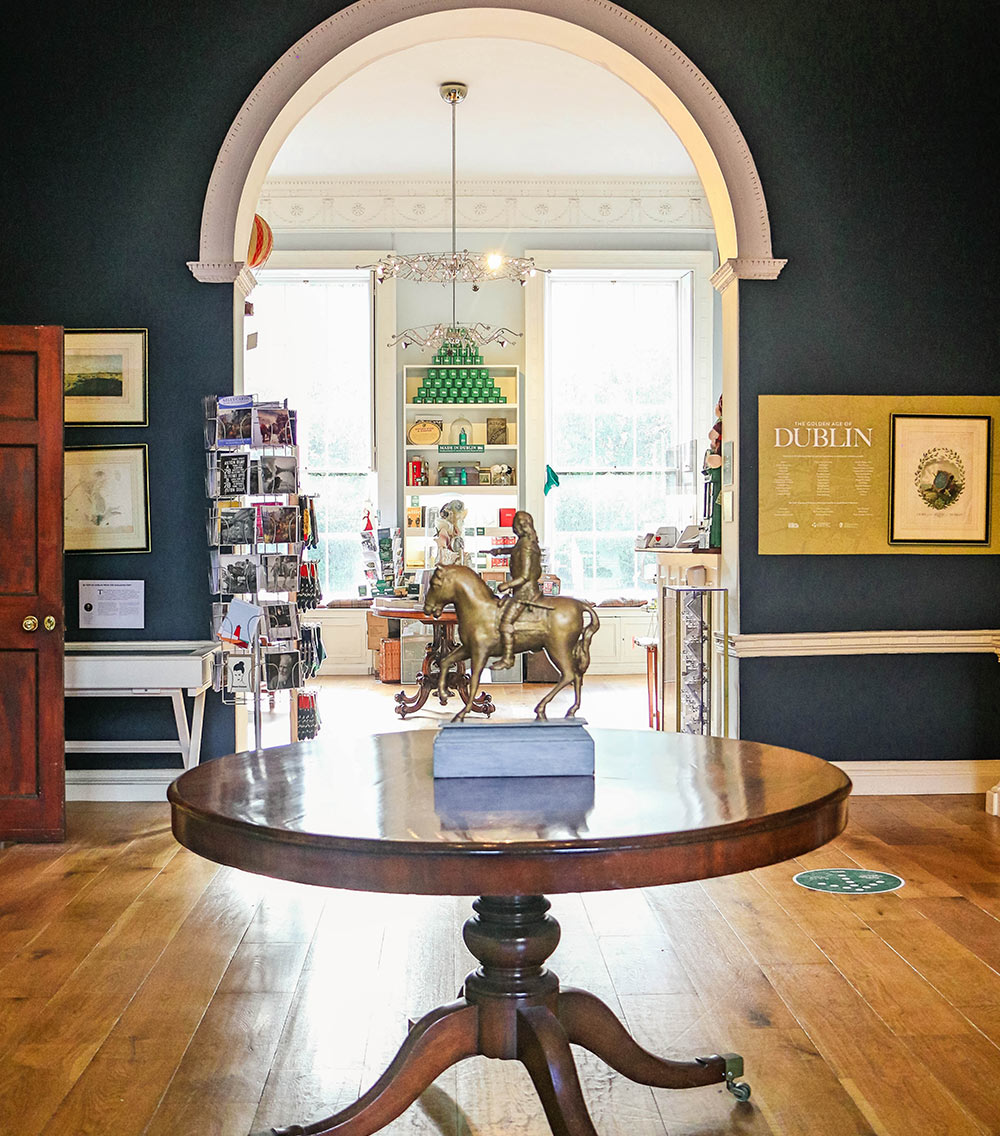
This quirky museum sits inside a Georgian townhouse that overlooks the beautiful St. Stephen’s Green and offers a quick tour of Irish history. Engaging guides and fascinating exhibitions, including one about U2, make the visit memorable.
Dublin’s literary history comes alive at the Museum of Literature Ireland (MoLI) on St Stephen’s Green. Here, visitors can learn about notable writers such as W.B. Yeats, James Joyce, and Oscar Wilde. The museum features interactive displays, audio guides for a personalized experience, and 50-minute guided tours.
The museum is located in the former Newman House of University College Dublin, where Joyce studied.


Glasnevin Cemetery Museum is the oldest cemetery in Ireland and is the final resting place of many significant figures in Irish history, such as revolutionary leader Michael Collins and former president Éamon de Valera. Various walking tours are available to help you discover its nearly 200-year-old history.
Adjacent to the cemetery, a connecting gateway leads to the beautifully maintained National Botanic Gardens. You can stroll through the lovely rose gardens, experience the tropical ambiance of the Great Palm House, and explore the grounds that feature around 15,000 different plant species.

The James Joyce Centre is a must for any literature enthusiast, celebrating work of the famous writer. An interactive display brings his famous novel, Ulysses, to life, and you can see various Joycean artifacts, including the original door from No. 7 Eccles Street, where Leopold Bloom, the main character of the book, lived.
You can take advantage of free audio tours, and guided walking tours lead you through the streets that inspired many of Joyce’s tales. Each year on June 16, the Centre hosts the Bloomsday Festival, a worldwide tribute to Ulysses, its author, and his impact on literature.

Ireland’s only print museum, the National Print Museum, celebrates the impactful art of printing. Modern displays by artists like Annie Atkins and Damn Fine Print showcase the significance of printed messages. Among its permanent collection is an original 1916 Proclamation of the Republic, marking Ireland’s independence.
Visitors can view the layout of a historic Dublin print shop, watch classic machines like letterpress and Linotype in action, and browse original prints available for purchase.

Founded in the 19th century, this charming Victorian market features a vibrant mix of shops and food stalls. Indulge in a delicious cupcake or a savory sausage roll from Lolly & Cooks, or pick up some fresh flowers at the lovely Appassionata flower shop.
At the far end of the arcade, you’ll find Designist, a quirky store filled with unique gifts and stylish homeware, as well as stationery from both Irish and international designers. This market offers a delightful experience for anyone looking to enjoy local flavors.
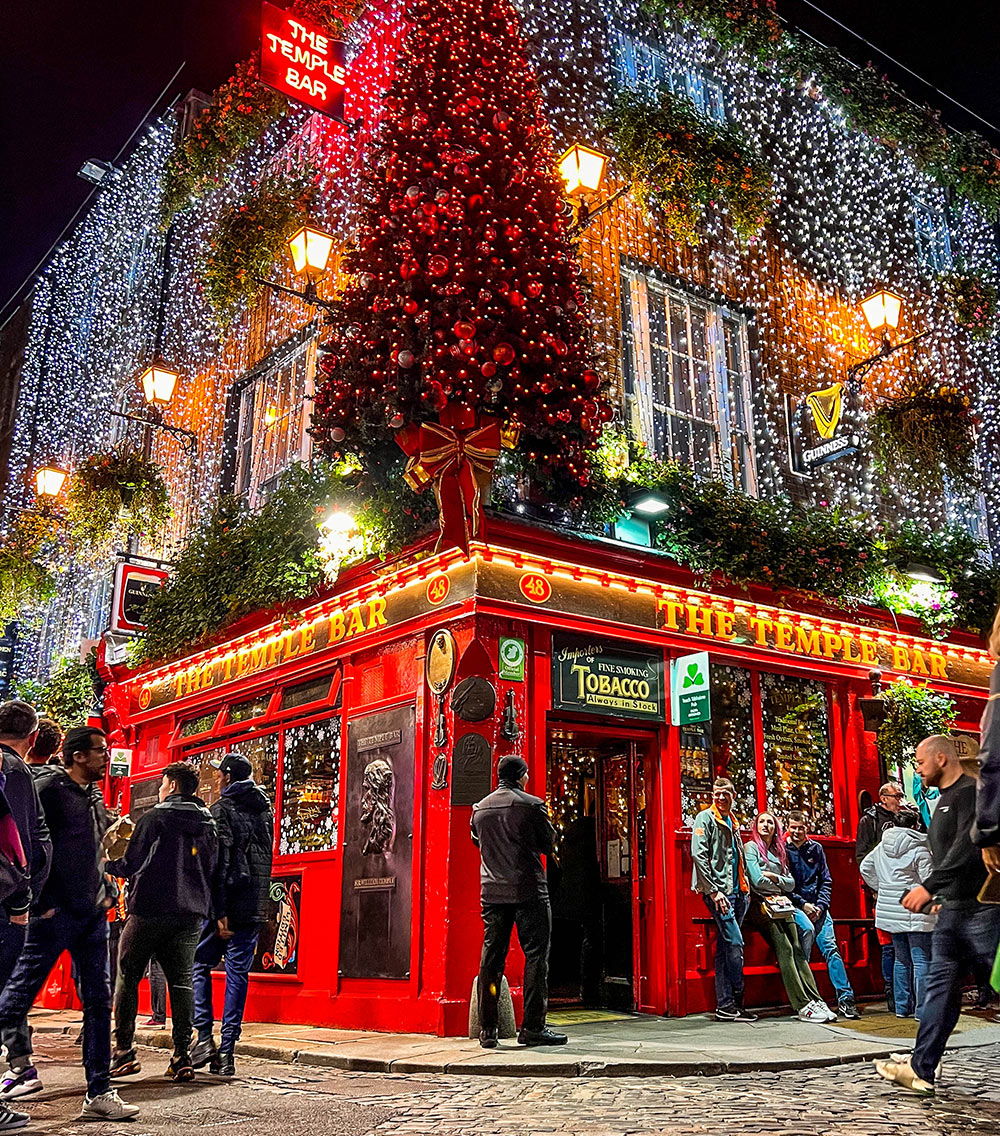
Originally settled by the Vikings, Temple Bar began to flourish in the 17th century. Sir William Temple established his home and gardens here, giving the area its name. Wealthy English families reclaimed the marshy land, which led to the creation of the streets and buildings we see today. The name “Temple Bar” first appeared on Bernard de Gomme’s map of Dublin from 1673, marking the area’s development.
Visiting Temple Bar in Dublin is straightforward, but knowing a few details can enhance your experience. First, it’s important to realize that Temple Bar refers to the vibrant district and not just the famous pub with its bright red exterior. This lively area is bordered by the River Liffey to the north and Dame Street to the south.
Temple Bar is recognized as a cultural hub, known for its colorful pubs and cobbled streets that have been featured in Ireland’s tourism campaigns for years. Many visitors recognize the distinctive red facade of its most famous pub, which contributes to its appeal. However, locals often see it as a tourist trap, where some establishments, like The Temple Bar Pub and Gogarty’s, can charge higher prices compared to other venues in the area.
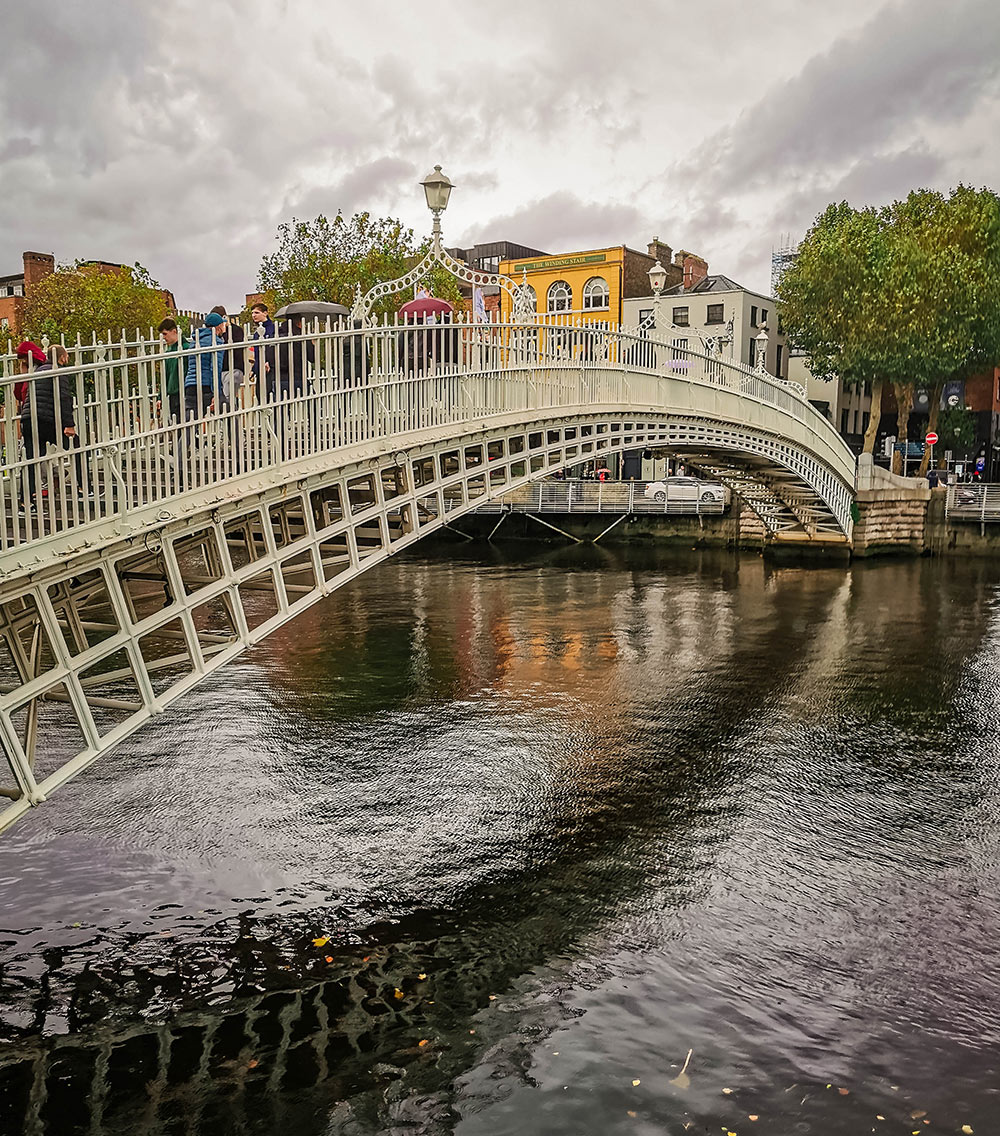
The Ha’penny Bridge is one of Dublin’s most recognizable landmarks. Located just a short distance from O’Connell Street, it connects Ormond Quay Lower with Wellington Quay. Built from iron in 1816 at a cost of £3,000, it initially charged a half-penny toll for pedestrians to cross.
Today, the bridge is a blend of history and modernity, attracting around 30,000 daily crossings, mostly by locals. While it serves as a quick passage over the River Liffey, it’s conveniently situated near popular attractions like Temple Bar, The GPO, The Spire, and the O’Connell Monument. Before the bridge was constructed, seven ferries operated by a man named William Walsh ferried people across the river, highlighting how important this crossing has been for centuries.


For those seeking group activities in Dublin, several whiskey distilleries offer highly praised tours. The most famous is the Jameson Distillery on Bow Street, but the Pearse Lyons, Roe and Co, and Teeling distilleries also provide great experiences. We also enjoyed the Tullamore D.E.W. Distillery Visitor Experience, which was fantastic.
If beer is more your style, don’t miss the iconic Guinness Storehouse or the lesser-known Rascals Brewing Company located in Inchicore. Both are excellent spots.

The Killiney Hill walk is a delightful choice for walkers of all fitness levels. If you’re up for a brief hike, you can follow the well-marked 30-minute trail that leads you through scenic paths. For those who want to skip most of the uphill climb, you can drive to the main parking area, which is only a short stroll from the summit.
Once at the top, you’re rewarded with stunning panoramic views that stretch across the city and countryside, making it an ideal spot for photos. On a clear day, you can even catch a glimpse of the sea. It’s a perfect escape from the hustle and bustle of Dublin, allowing you to connect with nature and enjoy the fresh air. Don’t forget to pack a picnic to fully enjoy the experience!

The Poolbeg Lighthouse walk is an excellent choice if you’re looking to enjoy some fresh air while staying close to the city. Nestled on the Great South Wall, the iconic red Poolbeg Lighthouse has stood since 1768, serving as a guiding light for sailors.
You can choose between two trails: the longer route begins at Sandymount Strand and takes about 2.5 hours, while the shorter path starts from the car park on Pigeon House Road and lasts around 1 hour. Both walks lead you out into Dublin Bay, where you’ll be treated to stunning coastal views. Just be sure to dress warmly, as the area can get quite windy. It’s a perfect spot for a leisurely stroll, and you might even spot some seabirds or boats while you’re there. Don’t forget your camera to capture the picturesque scenery!

Just a short walk from Temple Bar, Dublinia offers interactive exhibits that let kids climb aboard a Viking ship and explore a replica Viking home. A combo ticket with Christ Church Cathedral allows visitors over 12 to ring the bells and try on costumes in the crypt. Afterward, visit St. Patrick’s Cathedral, then enjoy a picnic in the park nearby, which has a playground.
Head to the Docklands to see the Jeanie Johnston, a replica famine ship that shares stories of those who left Ireland during the Great Hunger. Next door is EPIC The Irish Emigration Museum, where families can learn about famous Irish emigrants through interactive displays. Combo tickets are available for both attractions.
Enjoy nature at Airfield Estate, an urban farm where kids can collect eggs, feed animals, and milk cows. There are lovely walking trails and gardens to explore, and a café where you can grab a bite to eat.
Just a 30-minute drive from the city, Newbridge House and Farm combines history and outdoor fun. The Georgian mansion is filled with interesting furniture and portraits, while the working farm lets kids meet animals like piglets and goats. Bring a picnic and take a break in the woodland playground.
You can explore two options for day trips from Dublin. If you have a car, there are several great spots to visit nearby. For those who prefer not to drive, there are also fantastic day tours available that take you to various attractions around the city.

Wicklow, often called the “Garden of Ireland,” stands out as one of the most beautiful day trips you can take from Dublin. It is a 55-minute drive.
For an unforgettable day in Wicklow, consider the following itinerary:
If you’re feeling adventurous, consider dedicating your morning to one of Wicklow’s longer hikes, offering an immersive experience in this stunning landscape.

The Mourne Mountains in County Down make for an impressive day trip from Dublin, especially if you’re traveling by car. It is a 2-hour drive. To make the most of your visit, some planning is essential, as there will be plenty of walking involved.
For first-time visitors, a great way to start is by exploring Tollymore Forest Park, where you can soak in the beautiful scenery. If you’re up for a challenge, the Mourne Mountains offer numerous hiking trails, including the demanding Slieve Donard hike, which rewards you with stunning views from the highest peak in Northern Ireland.

County Meath is a fantastic option for a day trip from Dublin, located just about 35 minutes away by car. This region offers a wealth of activities that promise an exciting adventure.
If you’re planning a day in the Boyne Valley, consider this mini itinerary to maximize your experience:
If you’re eager to see more of what County Meath has to offer, consider heading to the Hill of Tara, an essential archaeological site that holds great significance in Irish history, or check out Trim Castle, known as one of the best-preserved Anglo-Norman castles in the country.
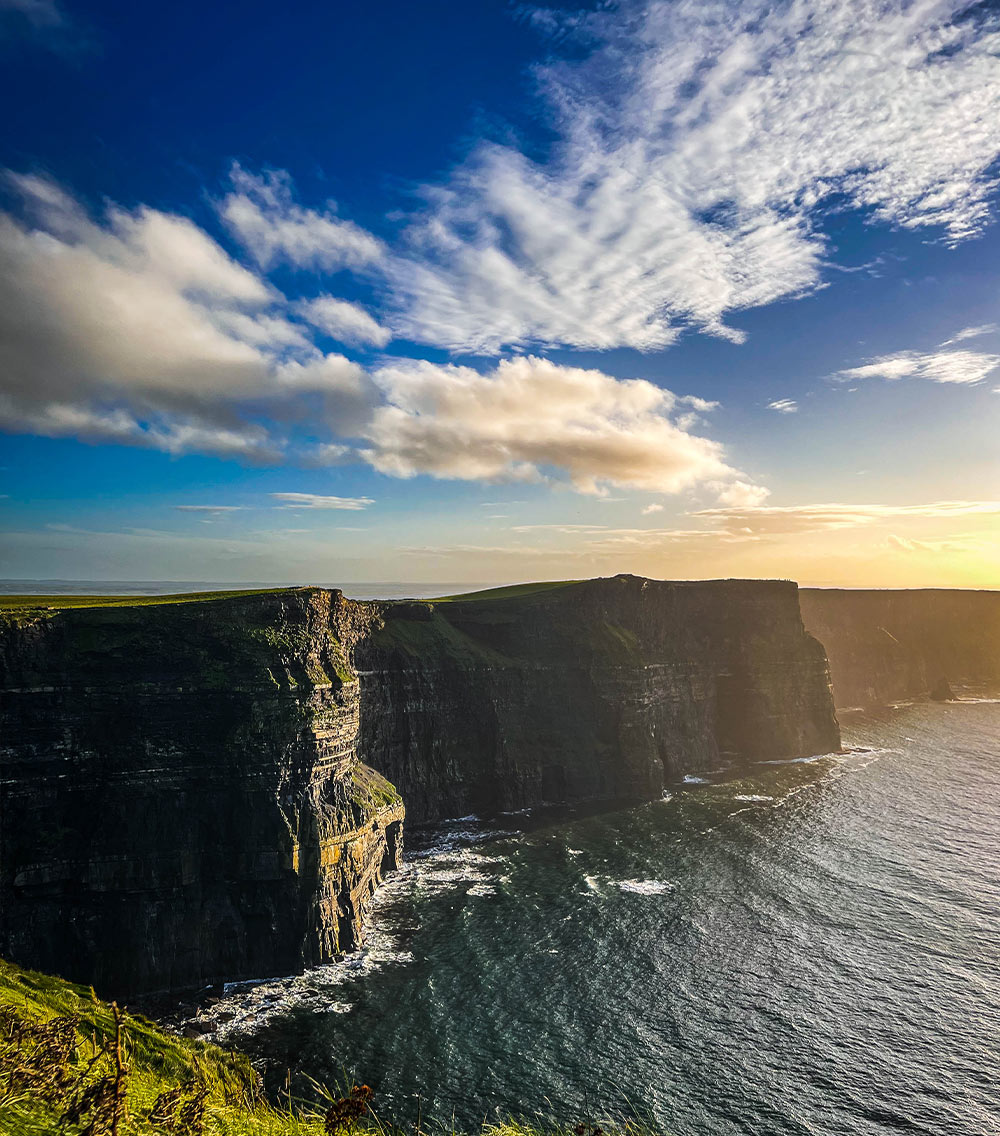
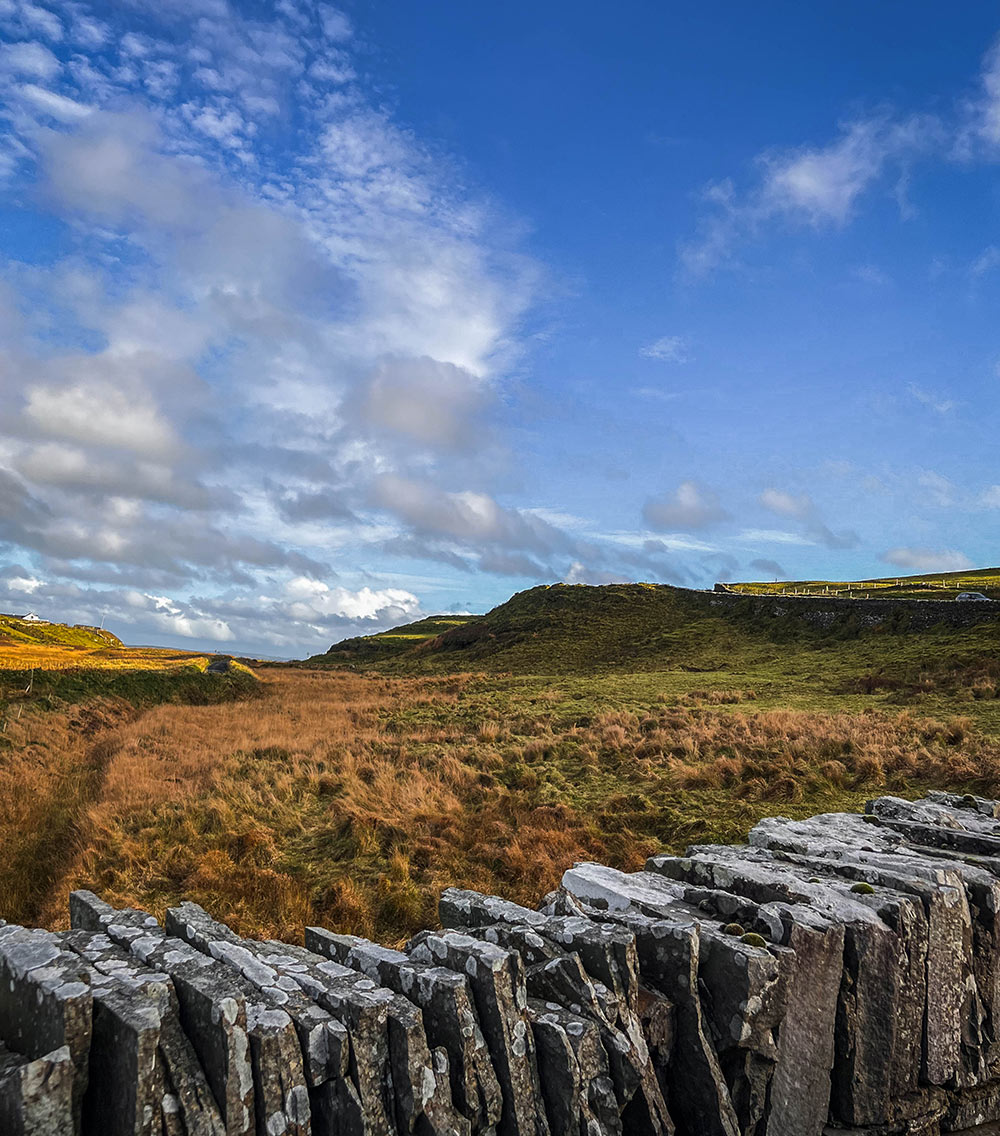
The Cliffs of Moher, located in County Clare, are one of Ireland’s most breathtaking natural wonders, rising 702 feet above the Atlantic Ocean and extending for 13 kilometers from Doolin to Liscannor. Drawing over 1.5 million visitors annually, they stand as the country’s premier tourist attraction.
Depending on your preference for exploration, you can choose to visit the visitor center for a quick look or embark on one of several walking trails that offer stunning views of the cliffs.
For a unique experience, consider taking a boat tour that sails beneath the cliffs, providing an unparalleled perspective of their grandeur. Some tours even include a visit to the Aran Islands, with the cliffs as part of the return journey.

Just north of Kinvara village, Dunguaire Castle is one of Ireland’s most photographed castles. This classic Irish Tower House stands proudly along the Galway Bay shoreline and opens to visitors during the summer months. Built in 1520 by the O’Hynes Clan, the castle started as a simple tower house with strong walls.
In the 17th century, the castle came into the possession of the Martyn family from Galway, who kept it until the 20th century. In 1924, the famous surgeon and writer Oliver St. John Gogarty purchased and renovated Dunguaire Castle. He was friends with well-known poets like George Bernard Shaw and W.B. Yeats, who often met there.
To fully enjoy the beauty of this castle, take a self-guided tour. The grounds are lovely, and the inside features period furniture and plaques that tell its story.
Don’t miss the chance to go up to the roof for stunning views of the bay and Kinvara village. Just be careful, as the walkway around the top is quite narrow.


Burren National Park is a must-see destination in County Clare. This park features many amazing attractions, including the Poulnabrone Dolmen and the nearby Aran Islands.
A scenic drive through the Burren is a great way to explore the area if you only have a day. This 100-mile route starts and ends in the charming fishing town of Ballyvaughan, taking you deep into the park.
You can complete the drive in a single day or spread the trip over a few days, stopping at villages along the way to hike.
One popular stop is Fanore which is great for swimming and water sports. The village has a lively pub and restaurant. Another highlight is the Poulnabrone Dolmen, one of the best-preserved portal tombs in the world.
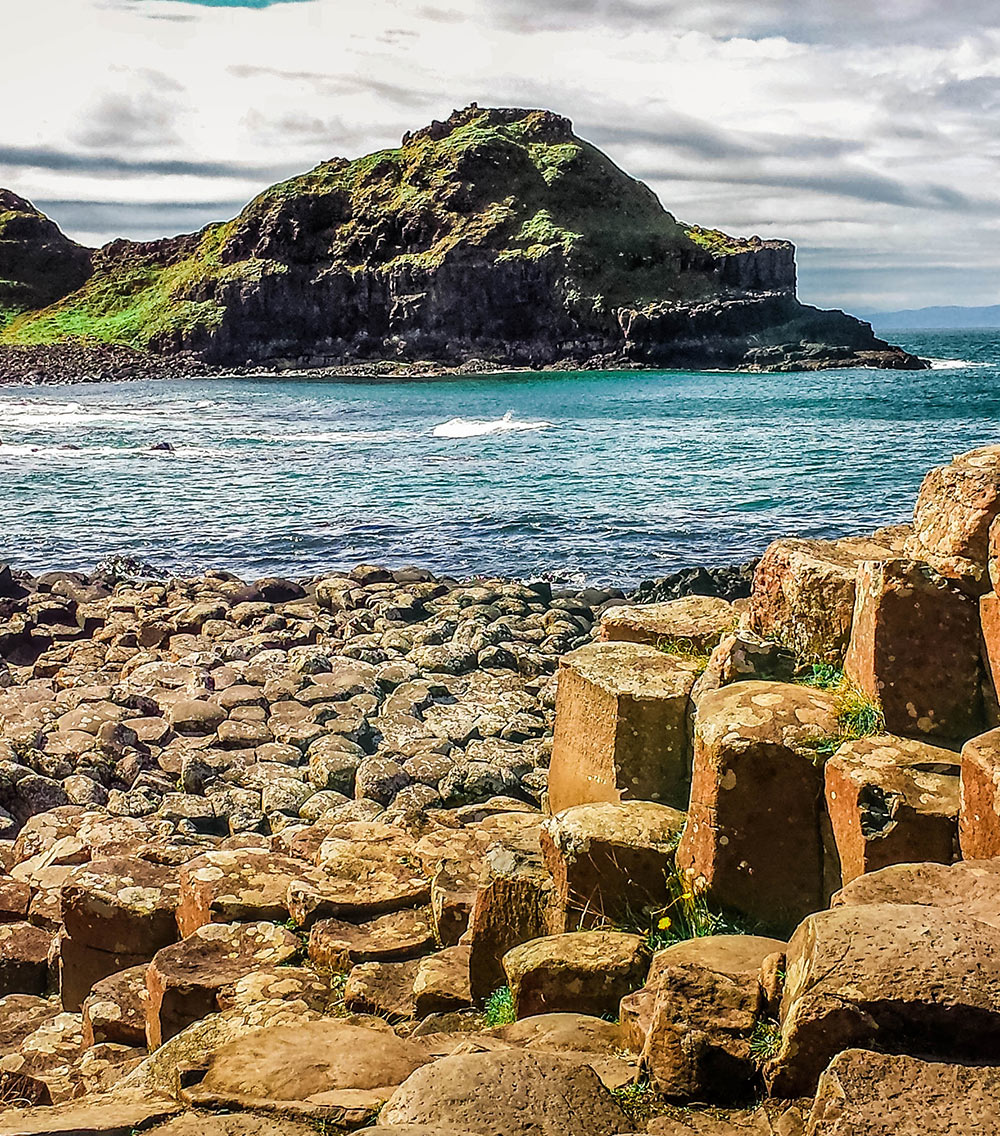
The Giant’s Causeway is situated at the base of the stunning basalt cliffs along the coastline, on the edge of the Antrim plateau in Northern Ireland. This natural wonder consists of approximately 40,000 enormous black basalt columns rising from the sea, creating a breathtaking view that has inspired numerous legends about giants crossing the waters to Scotland.
Over the past 300 years, geological research has significantly advanced our understanding of these unique formations. Studies reveal that this remarkable landscape was shaped by volcanic activity during the Tertiary period, around 50 to 60 million years ago. The distinct hexagonal shapes of the columns and the surrounding terrain showcase the power of nature and provide insight into the geological processes that formed the earth’s crust. Visitors to the Giant’s Causeway can explore not only its awe-inspiring beauty but also the rich history and science behind this UNESCO World Heritage Site. The interplay of myth and geology makes it a must-visit destination for nature lovers and history enthusiasts alike.

Bregagh Road, commonly known as the Dark Hedges or King’s Road from Game of Thrones, features two rows of beech trees planted in the 18th century by James Stuart to create a grand entrance to Gracehill House. Originally consisting of over 150 beech trees, the avenue has since become one of the most photographed spots in Ireland, attracting Game of Thrones tours and visitors eager to capture its enchanting beauty.
Unfortunately, only about 90 trees remain today due to heavy foot traffic, but efforts are underway to replant new trees where old ones have fallen. Inspections revealed that damaged roots contributed to their decline, prompting the closure of Bregagh Road to preserve the remaining trees for future generations.
Local legend has it that on dark nights, the Grey Lady can be seen gliding between the trees, believed to be the spirit of a maid who died mysteriously or James Stuart’s daughter, known as “Cross Peggy.”
If you’re looking for great places to eat in Dublin, start your journey at the intersection of Wicklow Street and South William Street. This area is buzzing with energy, especially in the summer evenings, and is lined with a variety of coffee shops, cafes, bars, and restaurants.
Dublin boasts a vibrant food scene catering to all tastes and budgets, from casual eateries to upscale Michelin-starred restaurants. In the city center, you can find everything from traditional Irish pubs to cozy cafés and brasseries, as well as a wide range of international cuisines.
Capel Street is a fantastic spot to discover affordable Asian restaurants, where you can enjoy delicious meals like Korean fried chicken, Vietnamese pho, and bánh mì for under €10.
The Liberties and Portobello are particularly popular among foodies, featuring trendy brunch spots and charming neighborhood bistros. Meanwhile, Stoneybatter offers some excellent ramen and Italian dining options.
It’s a good idea to book your table in advance, especially on weekends. However, if you’re feeling lucky, try to snag a last-minute spot by checking restaurant social media for cancellations or calling them directly, as online booking systems may not always be updated. Most places serve food all day, but some might close between lunch and dinner. Dinner typically starts around 5 PM and can go until 10 PM, so plan accordingly.


While there isn’t one definitive best area, several neighborhoods offer excellent options based on your preferences.
This affluent and leafy neighborhood is home to many embassies and is just a 10-15 minute bus ride or a 35-minute walk to the city center. It’s known for its safety and pleasant atmosphere.
These trendy areas are perfect for first-time visitors, just 15-20 minutes from downtown. They feature a lively ambiance with plenty of cafes, pubs, and restaurants while maintaining a more relaxed feel.
This historic district offers a serene escape in the heart of Dublin, complete with stunning Georgian architecture and colorful doors. You’ll find major attractions like the National Gallery and Grafton Street within a 10-minute walk.
A vibrant cultural hotspot known for its whiskey distilleries, The Liberties is close to attractions like the Guinness Storehouse and St. Patrick’s Cathedral, making it ideal for those exploring Dublin’s heritage.
Located at the top of Grafton Street, this area has shops, pubs, and restaurants. It’s very close to attractions such as Trinity College and Dublin Castle, making it one of the most convenient places to stay.
In spring and autumn, the city’s parks showcase their natural beauty, with blooming flowers in spring and stunning foliage in autumn. These seasons offer comfortable temperatures, perfect for strolls and exploring the rich history and culture of Dublin.
On the flip side, the months from November to February tend to be chillier, but this period has its unique charm. With fewer tourists, you can enjoy a more peaceful experience at popular attractions. Additionally, this is typically the most economical time to book hotel accommodations, allowing you to stretch your travel budget further.
Winter in Dublin transforms the city into a magical place, especially during the holiday season. Streets adorned with festive lights and beautifully decorated shop windows create a warm and inviting atmosphere. From Christmas markets to seasonal events, the city offers plenty of opportunities to soak in the festive spirit.






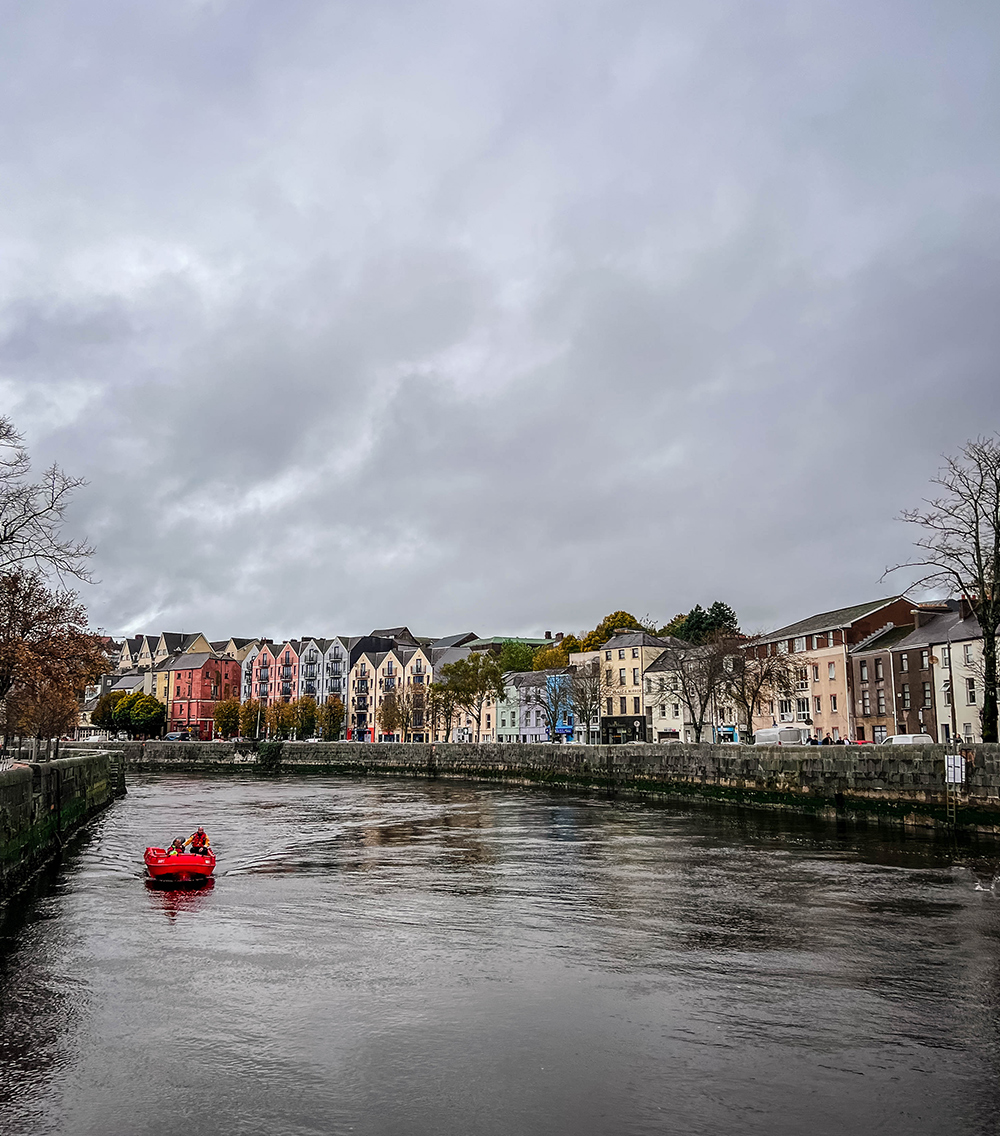

No Comments